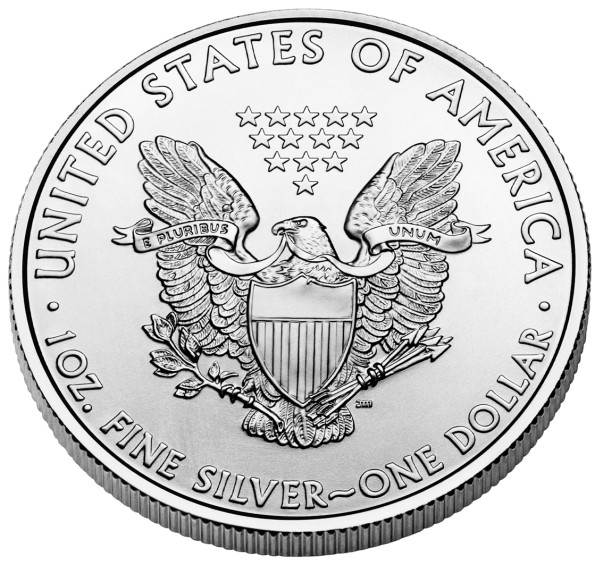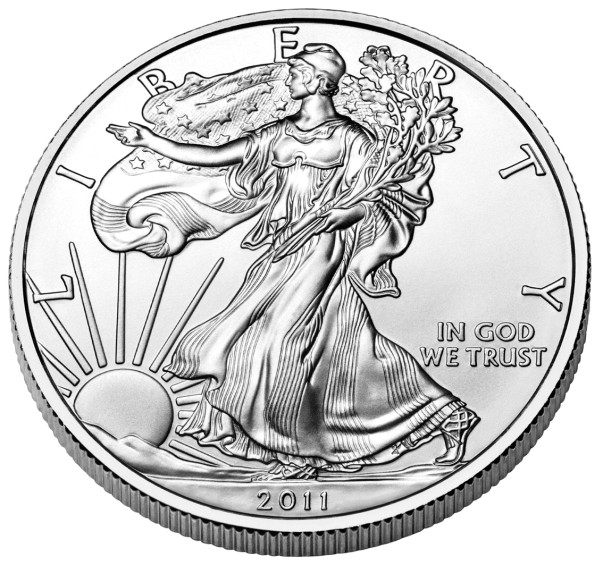American Silver Eagles
American Silver Eagles are an excellent coin for collecting, with clearly issued proofs, enough variations to make creation of a “set” possible, and impeccable minting standards in 99.9% pure silver. Older dates of coins, naturally, will need to be purchased either from reputable businesses specializing in the resale of coins, or directly from another collector.
Since American Silver Eagles are still being minted, it is also possible to purchase a new issue from the current year. The U.S. Government does not sell these coins directly to the public. Instead, Authorized Purchaser are allowed to buy them, who then handle distribution to the public either directly, or more often through their own network of retailers.
The exception to this is the “uncirculated” version of the American Silver Eagle, which can be bought direct from the United States Mint. There is a special toll free number which can be called to make purchases of this and other official U.S. Government coins, as well as a page on the U.S. Mint website giving news and updates about the current year’s planned release of uncirculated Silver Eagles.
These beautiful coins, with their superb images of the Walking Liberty and the bald eagle of the United States, their liquid, brilliant sheen of pure silver, and their interesting history in relation to the last days of the Cold War, and the peace-enforcing nuclear weaponry that was developed during the latter half of the twentieth century. These coins are redolent both of the powerful, shifting tides of history and of the timeless production values of the United States Mint.


Reverse and obverse of the 2011 American Silver Eagle coin.
Properties of the American Silver Eagle
American Silver Eagles began production in 1986, and remain the official one-dollar face value silver coin of the United States of America to this day. These coins weigh a full ounce, or slightly more than 31 grams, and are 1.6 inches across and 0.12 inches thick (40 mm by 3 mm). The purity of the American Silver Eagle is 99.9% pure silver, with just a whiff of copper accounting for the other 0.1%. The United States Mint certifies the coin’s purity, along with its other traits.
The allegorical figure of Liberty strides across the obverse, clad in a flowing gown and carrying an olive branch of peace crooked in her left arm, originally seen on half dollars minted during the period of the two World Wars. The backdrop is a rising sun with long, slender rays, and the coin is inscribed with “Liberty”, “In God We Trust”, and the date of its minting.
The reverse of the coin shows a proud bald eagle with its wings raised, an American shield in front of its body, a ribbon in its beak, and the arrows of war and the olive branch of peace clasped in its talons. Thirteen stars above the bird’s head symbolize the original Colonies, while the legend “United States of America, 1 oz. Fine Silver, One Dollar” encircles this image.
The government is, of course, keenly aware of the fact that coins should be made as collectible as possible, though they show more restraint than they did during the infamous years of the mid-twentieth century, when commemorative coins were issued for every conceivable reason, and no reason at all. There are therefore three types of American Silver Eagles – bullion, uncirculated (produced only between 2006 and 2008), and proof (minted in every year, including the current one, except 2009).
The coin is minted in three locations – the San Francisco Mint (proofs marked with an “S”), the West Point Mint (proofs marked with a “W”), and the Philadelphia Mint (proofs marked with a “P”). There have been several special editions of the coin produced, including a Sacajawea minting.
History of the American Silver Eagle
Silver has long been viewed by the United States government (and other governments of the world) as a strategic metal, due to its value originally as a currency, then as the backing for financial instruments used to fund state activities. Major stockpiling of this metal began in 1939, under the ominously gathering shadows of the Second World War, when the Strategic Materials Act was passed as the Axis gathered strength and the first shots of the seven year cataclysm were fired in Czechoslovakia and Poland. Silver has both monetary and industrial uses, and the U.S. Was determined to have a good stock on hand for both reasons.
Many silver deposits are found in the United States, however, especially in Nevada and Alaska. The shimmering flow of this metal from the depths of the earth to the coffers of the federal government continued for several decades, as the Defense National Stockpile Center accumulated stores of every substance that might prove strategically useful. The threat of the Soviet Union drove much of this hoarding, as the Cold War dragged on through its long nuclear stalemate.
Eventually, it was realized that the Stockpile had far more silver than was needed for the strategic purposes of the day. At the same time, in the late 1970s through the early 1980s, other, far more urgent strategic materials became scarce as a planet-wide recession slowed their production.
The need to make ferrochromium and ferromanganese for the advanced weapons systems produced at this period drove the government to sell the now-unnecessary silver to the public in order to raise funds for chromium and manganese production, as well as their extremely expensive processing. Several silver coins were issued by the Department of the Treasury at this time to pay for the new military programs, and one of these coin types was the American Silver Eagle.
It is thus that the American Silver Eagle coin had its birth, from the changing panoply of statecraft and the mighty forces it can bring to bear on everything from the fate of nations to the production of coinage. In effect, the coin was issued as part of an “excess inventory sale” on a grand scale, to raise money for purchasing new inventory as the dying Soviet Union and the United States exchanged glares and aggressive posturing across a highly polarized world.

